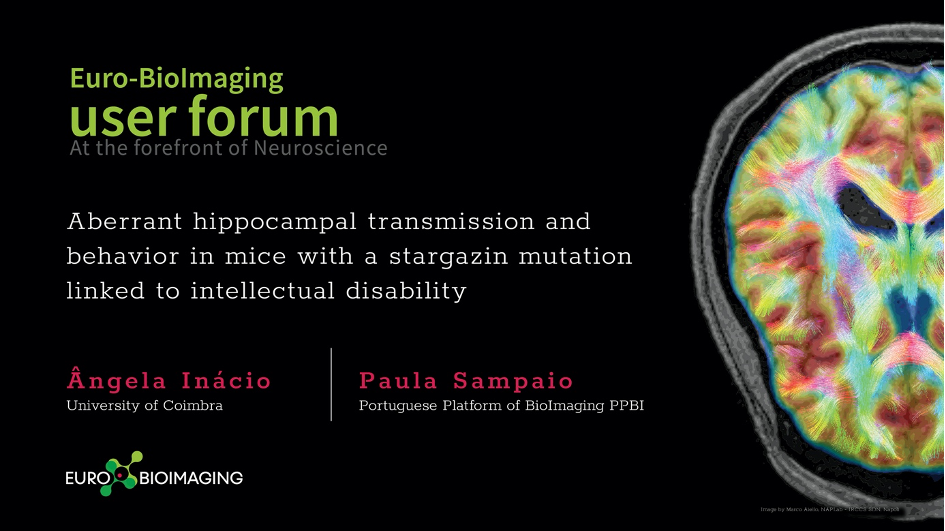
Aberrant hippocampal transmission and behavior in mice with a stargazin mutation linked to intellectual disability
Euro-BioImaging is organizing an online User Forum on April 5, 2022, from 14:00-17:00 CEST. This event will highlight the importance of cutting-edge imaging technologies in support of brain research and showcase the specific expertise available at our Nodes across Europe through case studies presented in tandem with the research community.
In this abstract, learn how Ângela Inácio, University of Coimbra, used imaging techniques available at the Portuguese Platform of BioImaging (PPBI) Node to study the effects of mutations linked to neurodevelopmental disorders on synaptic transmission and behavior on a molecular and cellular level.
Hear this talk and others like it on April 5 at the Euro-BioImaging User Forum: At the Forefront of Neuroscience.
Aberrant hippocampal transmission and behavior in mice with a stargazin mutation linked to intellectual disability
Ângela Inácio, University of Coimbra
Paula Sampaio, Portuguese Platform of BioImaging PPBI
Mutations linked to neurodevelopmental disorders, such as intellectual disability (ID), are frequently found in genes that encode for proteins of the excitatory synapse. Transmembrane AMPA receptor regulatory proteins (TARPs) are AMPA receptor auxiliary proteins that regulate crucial aspects of receptor function. Here, we investigate a mutant form of the TARP family member stargazin, described in an ID patient. Our data revealed that the ID-associated stargazin variant, V143L, presents increased cell surface mobility and disrupts synaptic AMPA receptor trafficking in cultured neurons. Knock-in mice harboring the V143L stargazin mutation manifest cognitive and social deficits and hippocampal synaptic transmission defects, resembling phenotypes displayed by ID patients. In the hippocampus of stargazin V143L mice, CA1 neurons show impaired spine maturation, abnormal synaptic transmission, and long-term potentiation specifically in basal dendrites, without alterations in dendritic arbor complexity. We also found alterations in the structure of post-synaptic densities in the hippocampus. These observations indicate that stargazin has a specific role in maintaining spine structure and synaptic function and plasticity in CA1 basal dendrites, which agrees with the higher expression levels of stargazin in the hippocampal stratum oriens, where basal dendrites are located, compared with the stratum radiatum, where apical dendrites are located. These data suggest that apart from the well-described brain region- and cell type-specific roles of TARPs, there may be subfield-specific roles that are determined by the subcellular distribution pattern of different TARPs. Altogether, our results point to a causal role for mutated stargazin in the pathogenesis of ID and unveil a new role for stargazin in the development and function of hippocampal synapses.

More news from Euro-BioImaging


